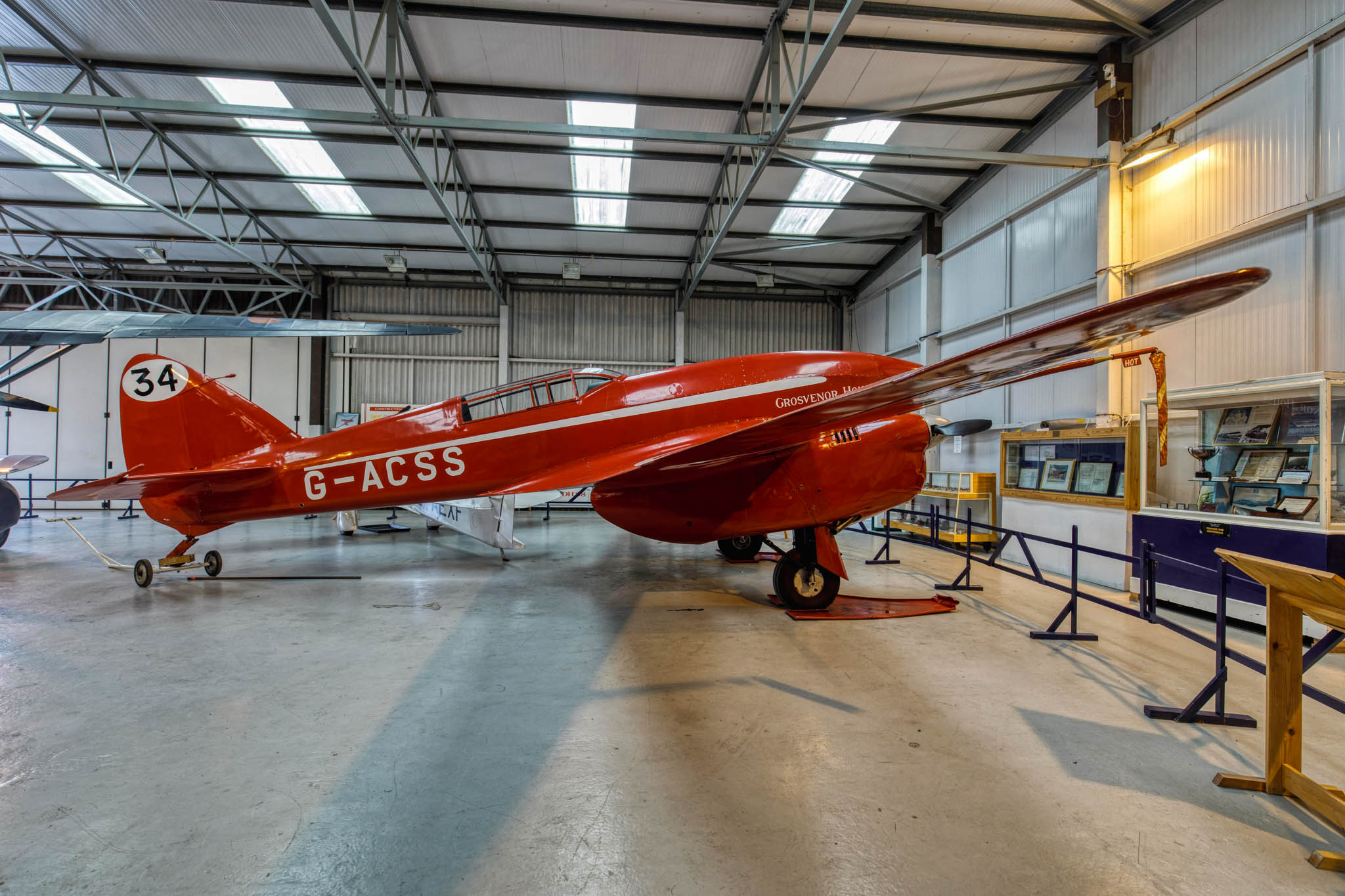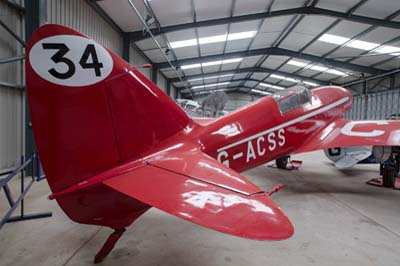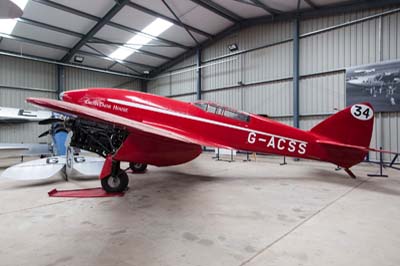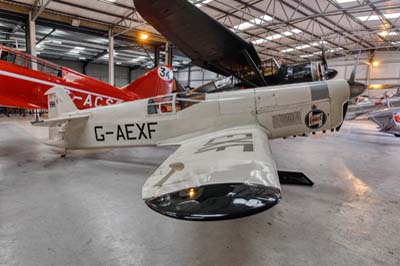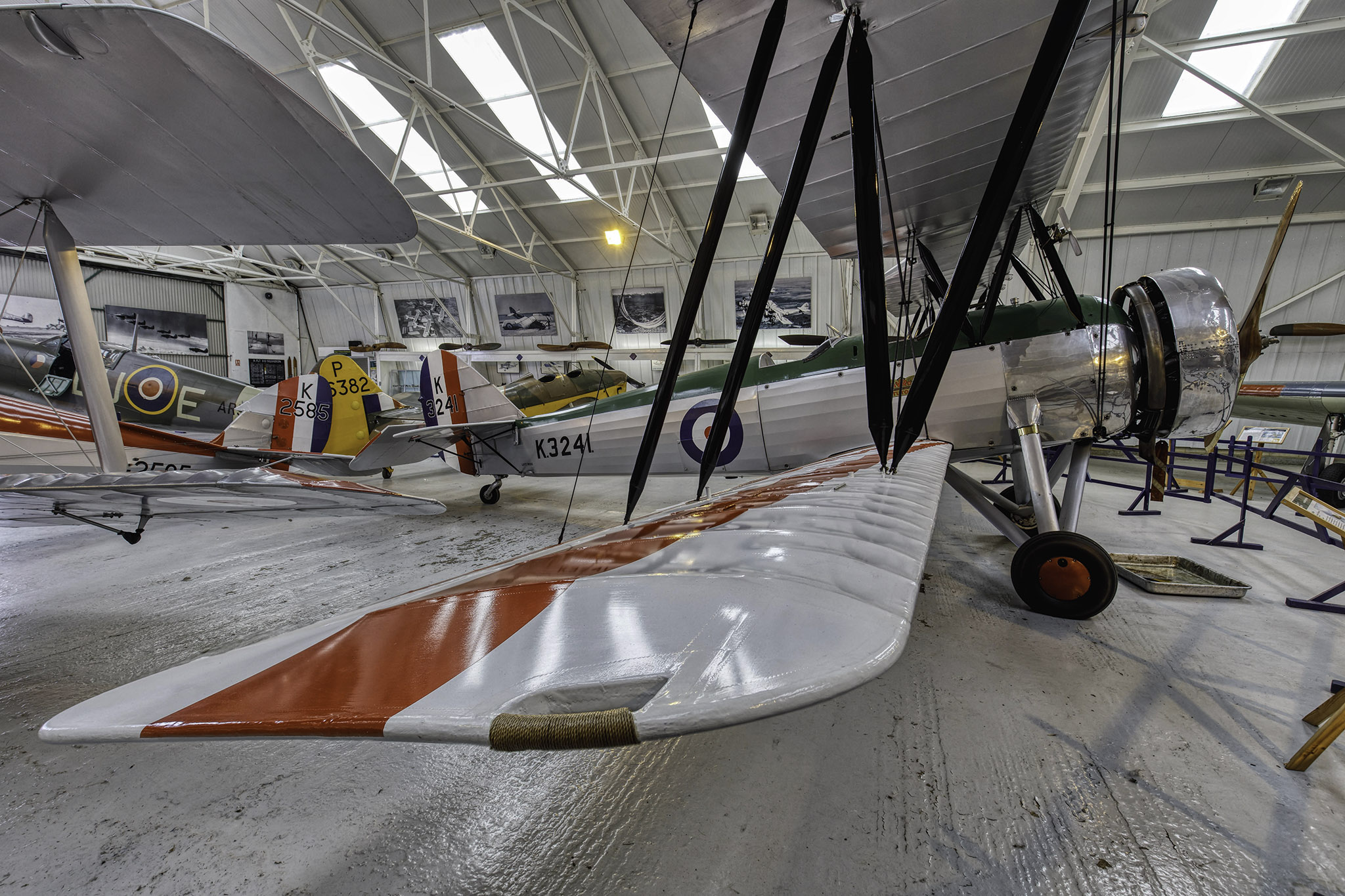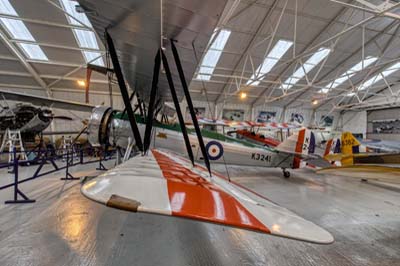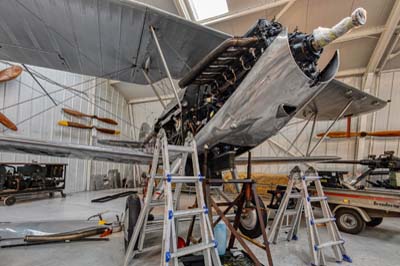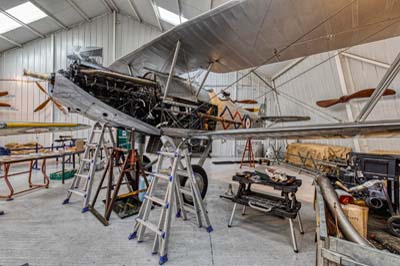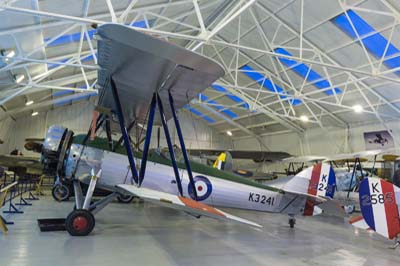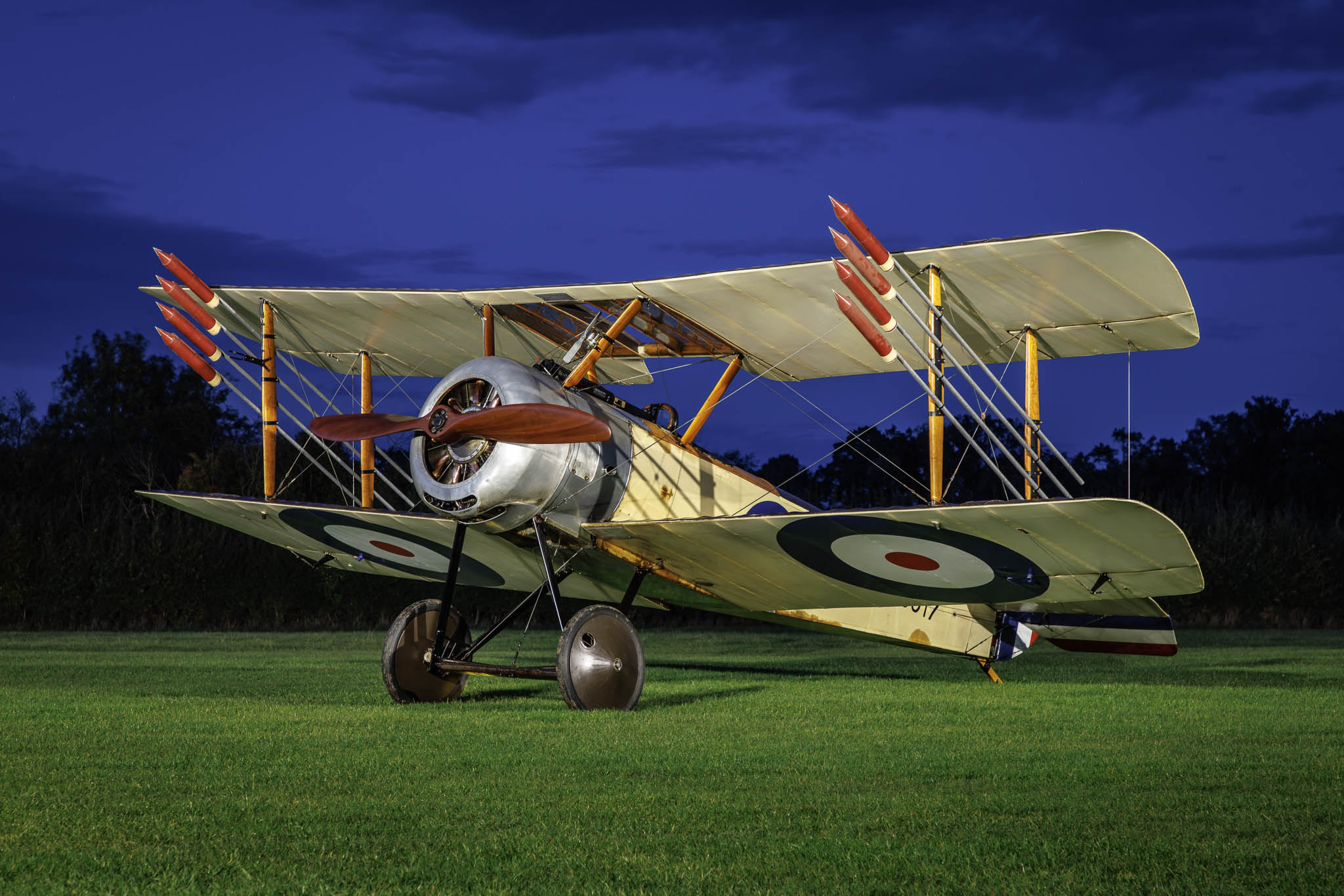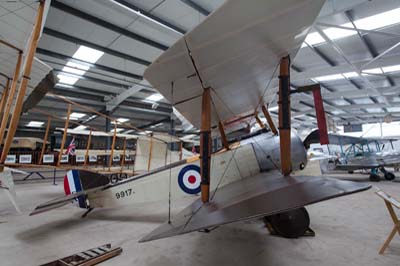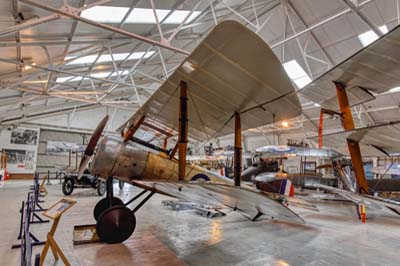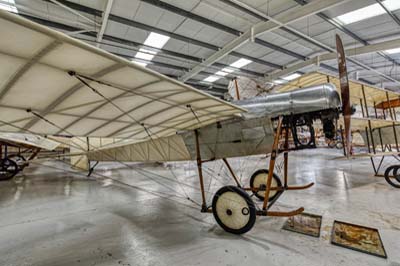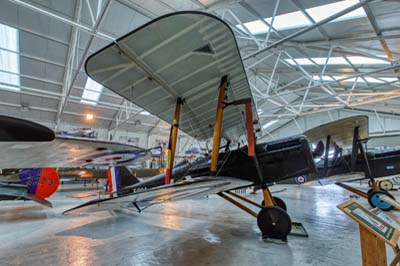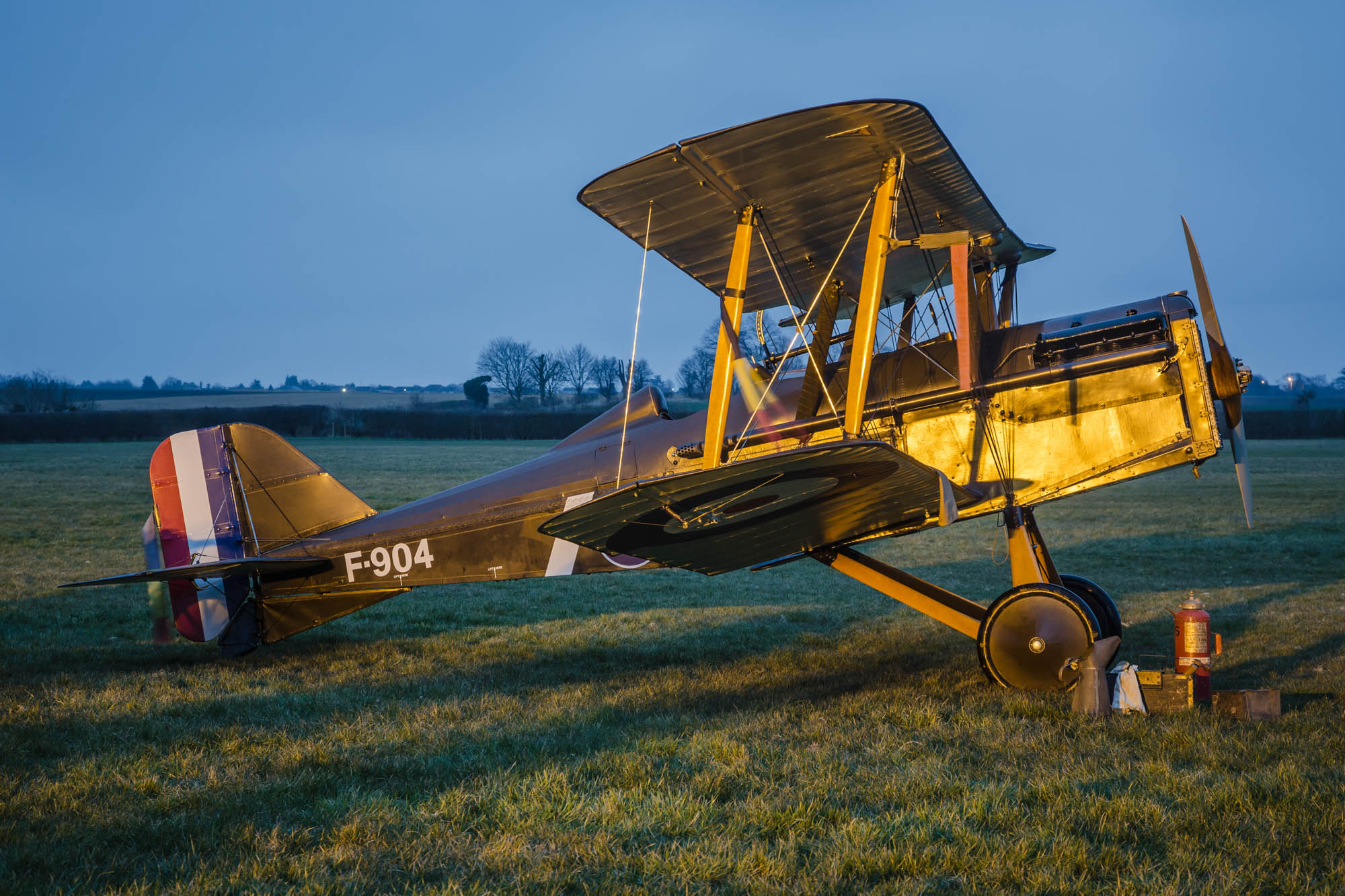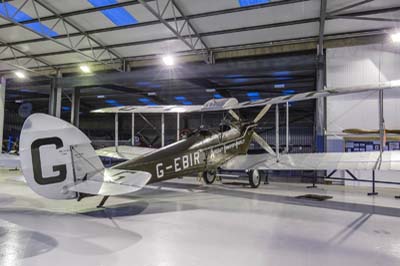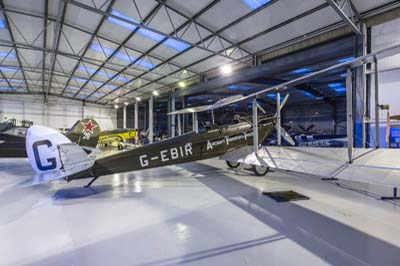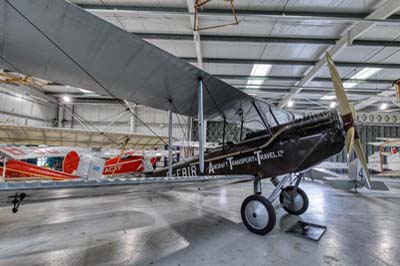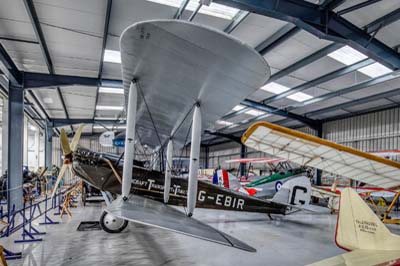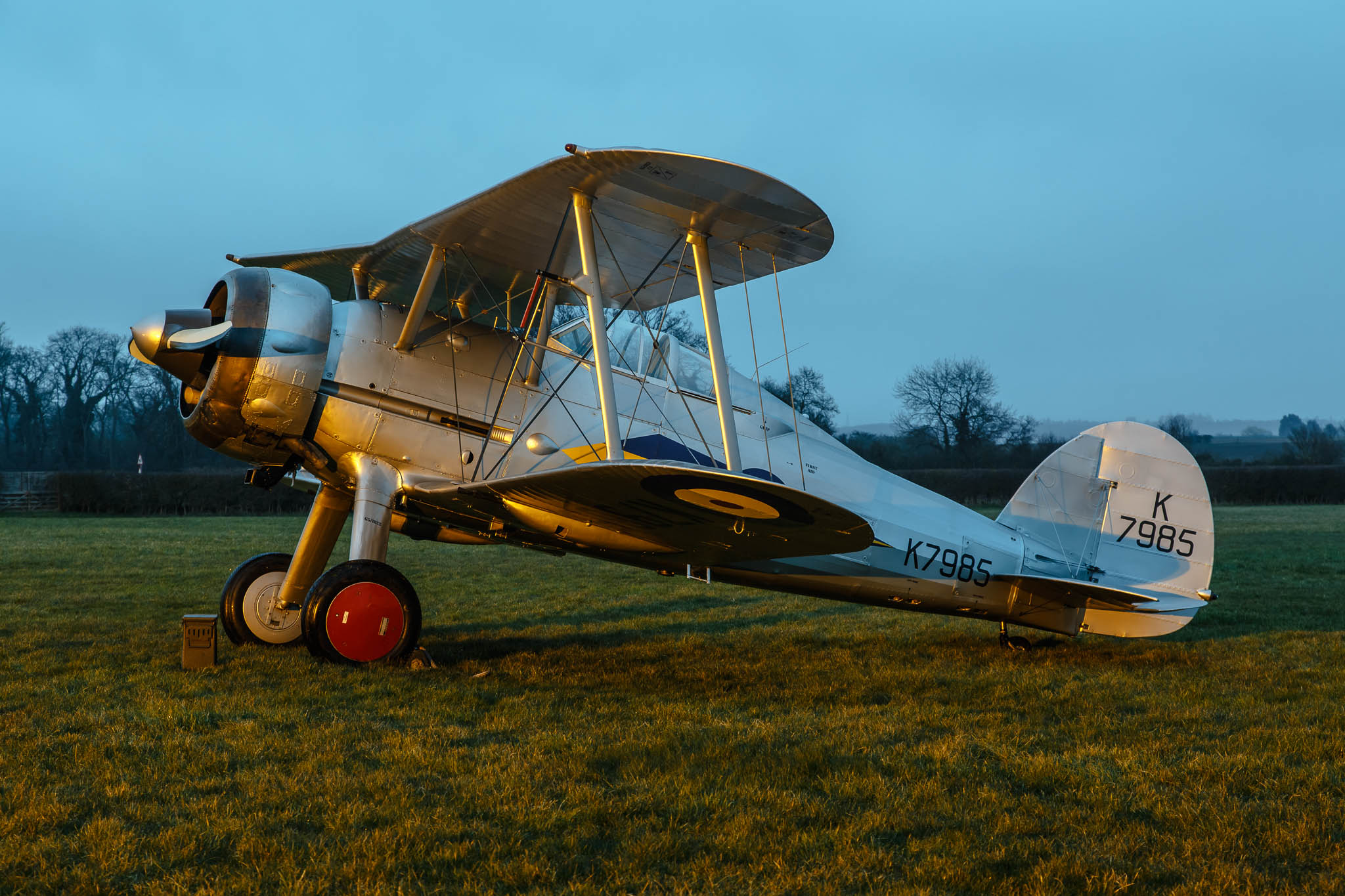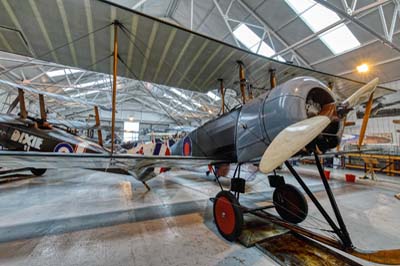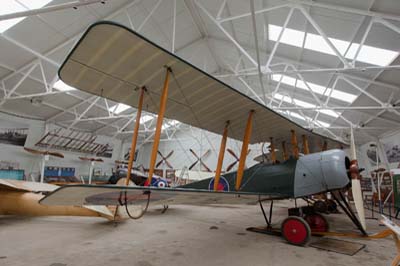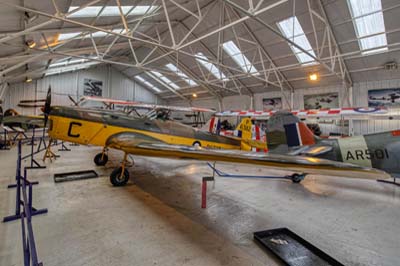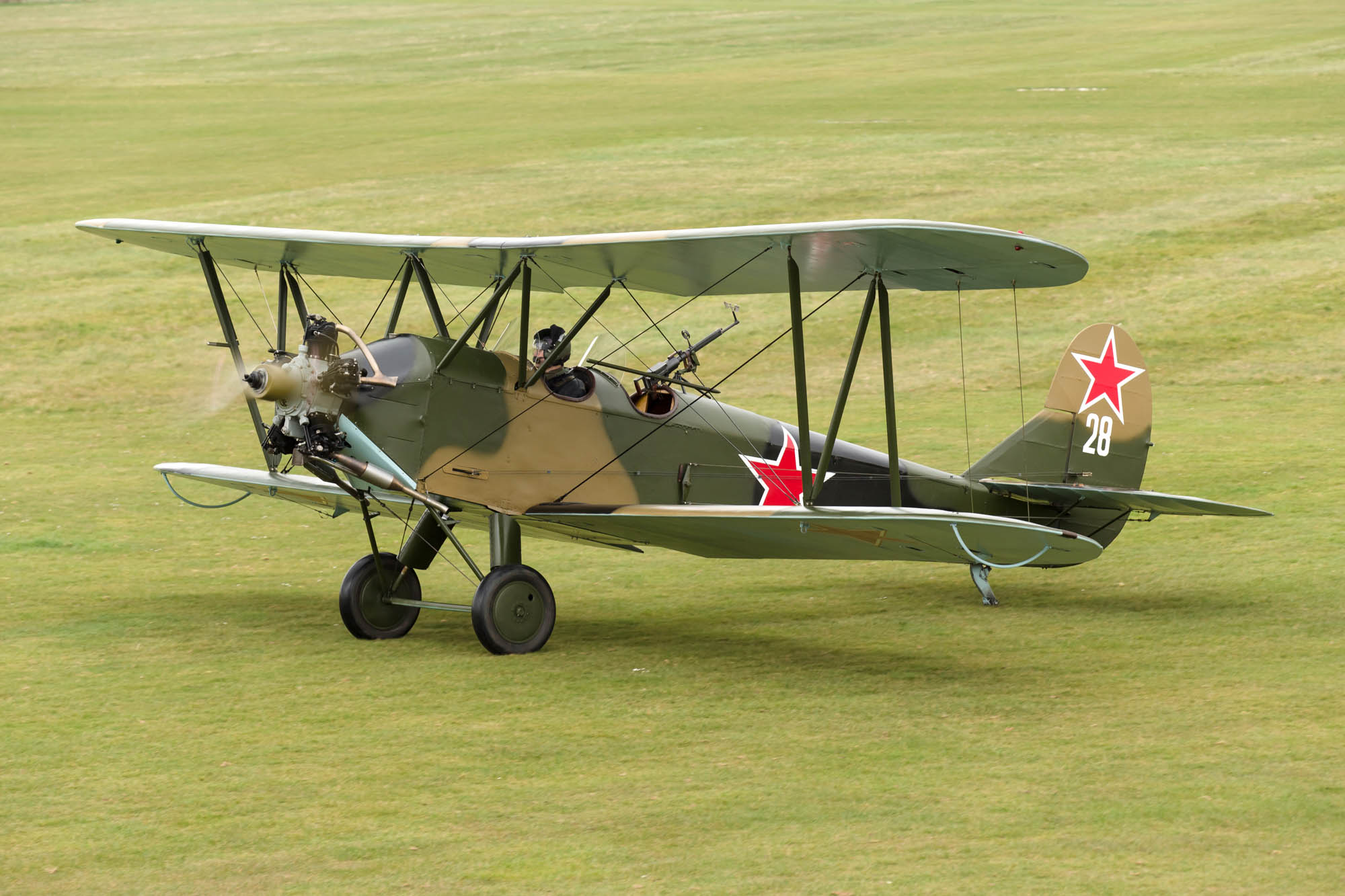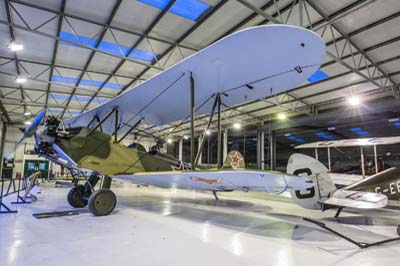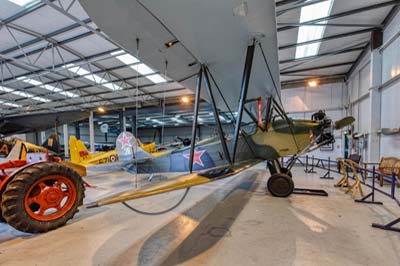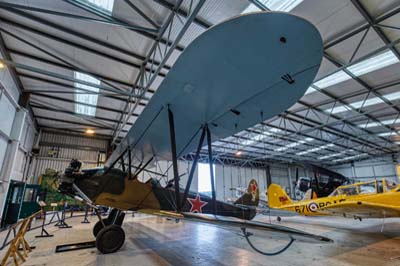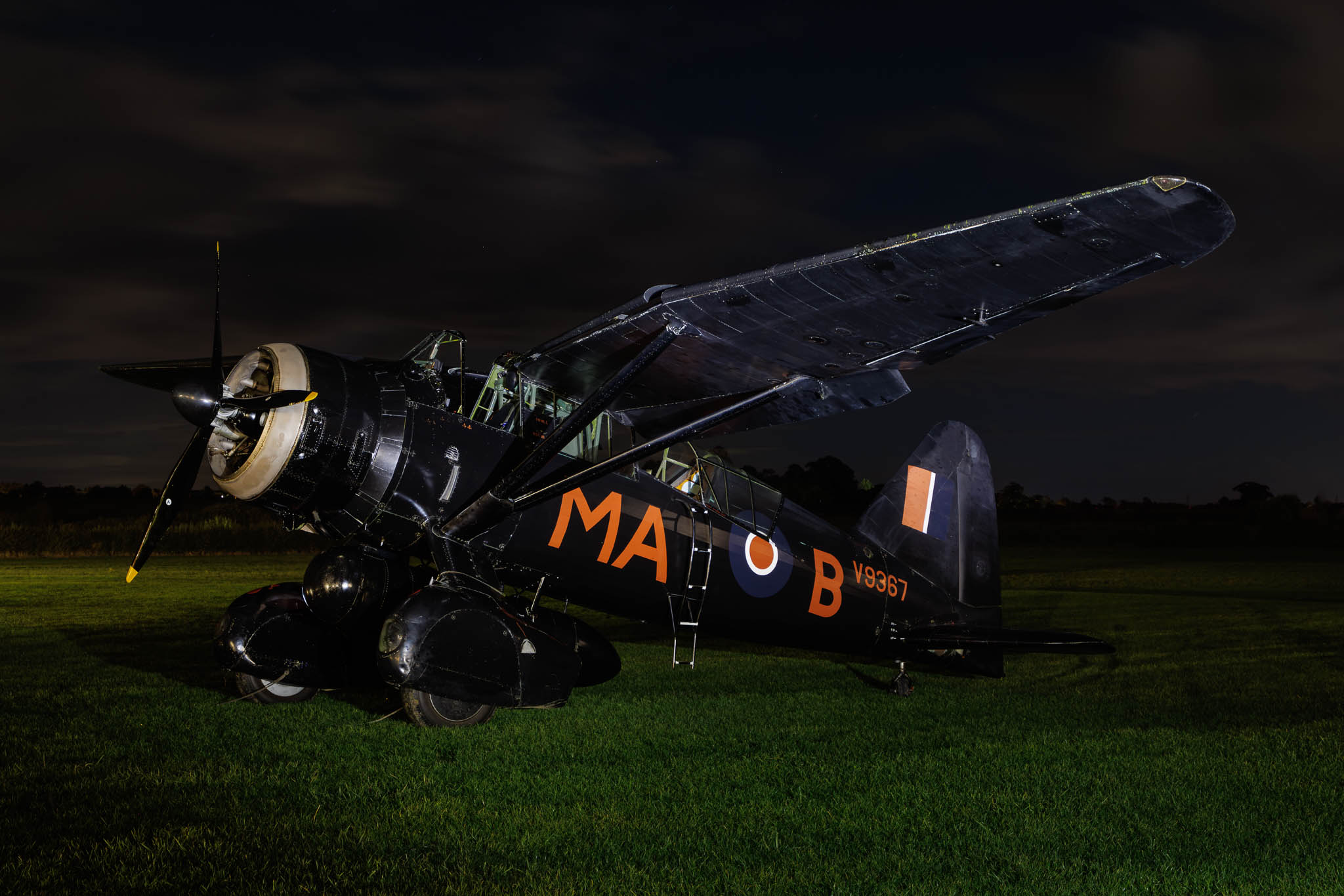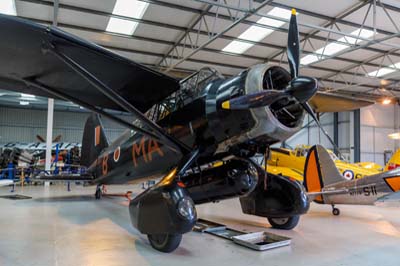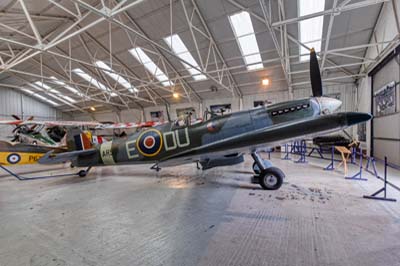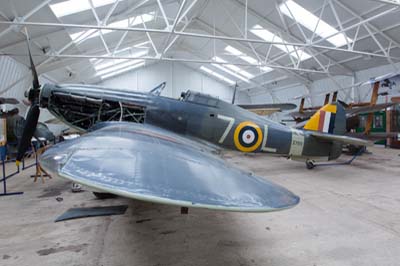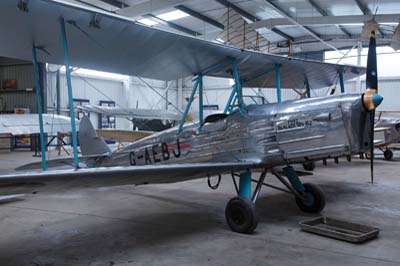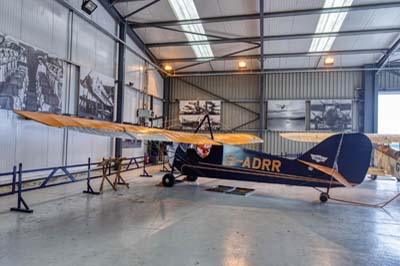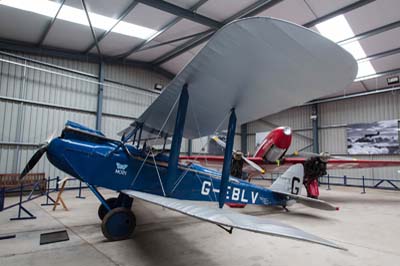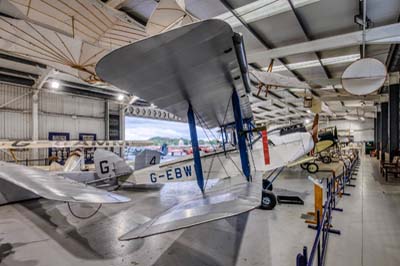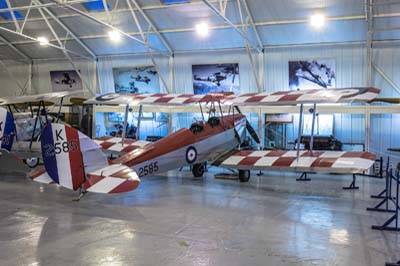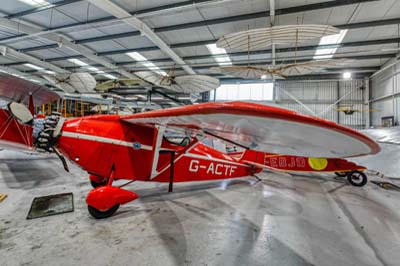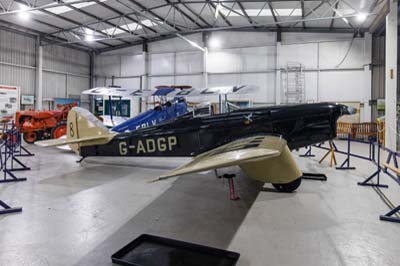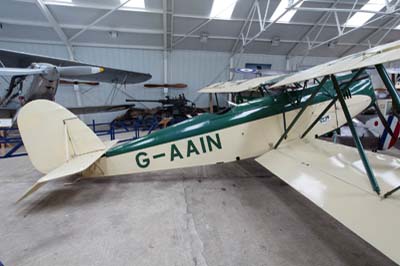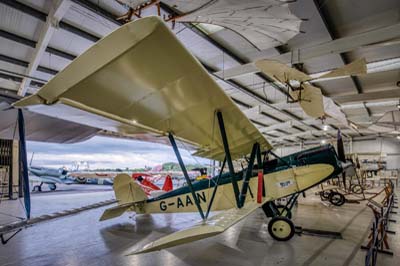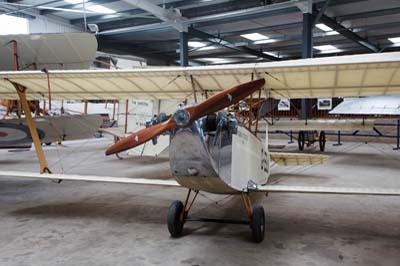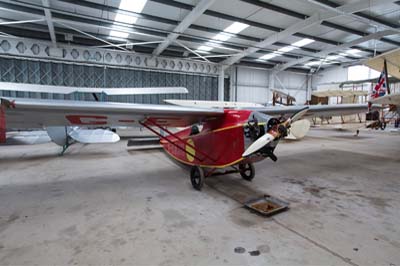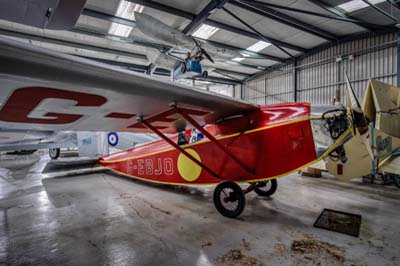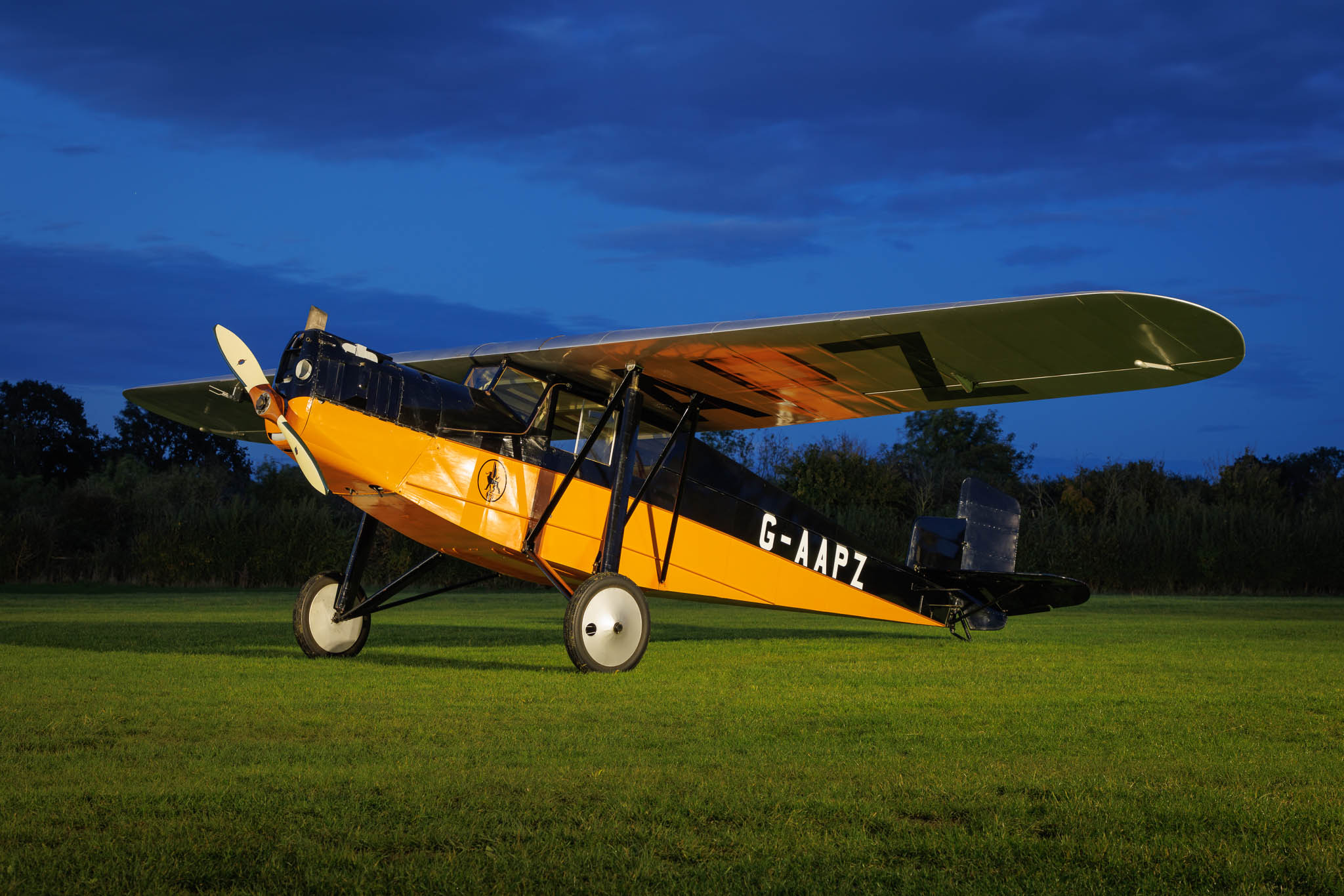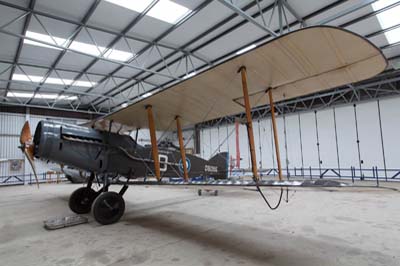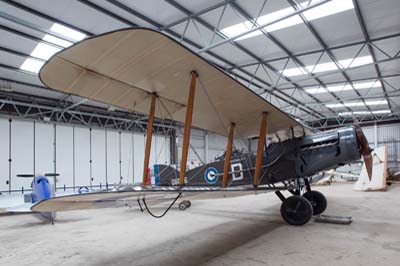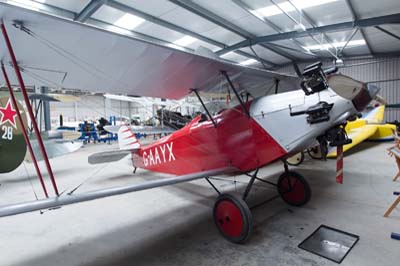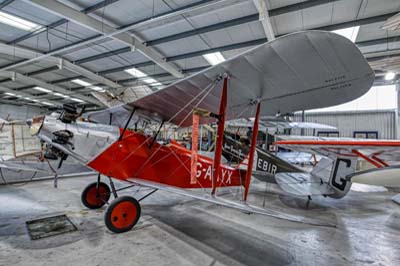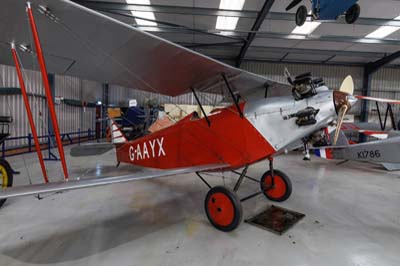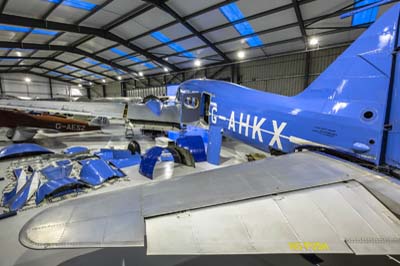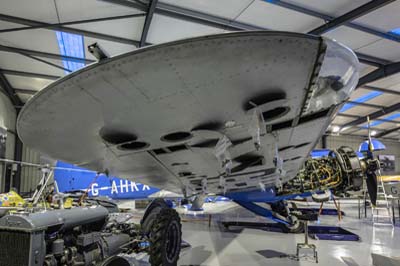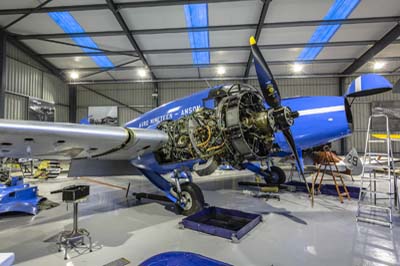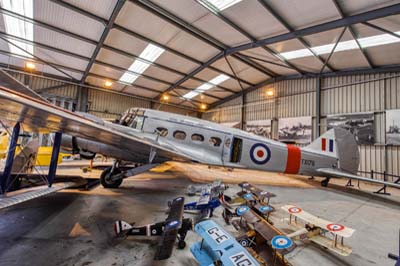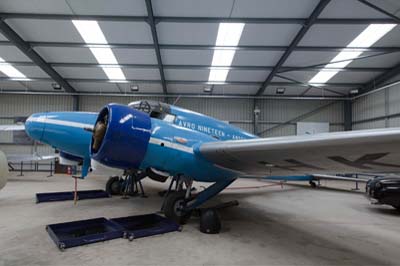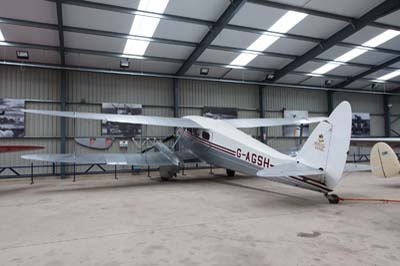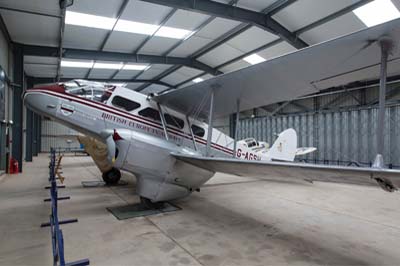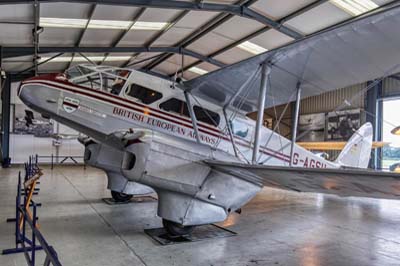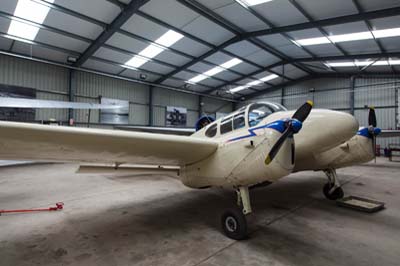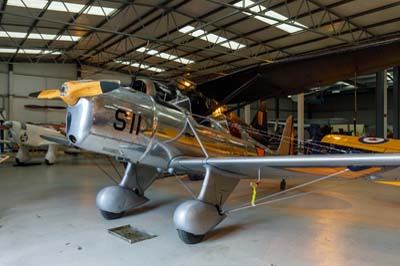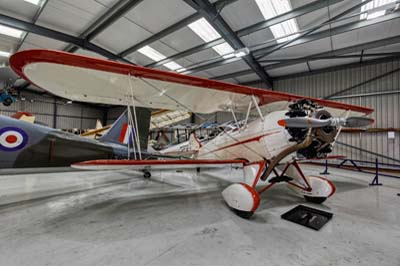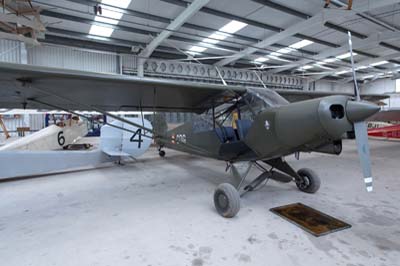The Shuttleworth Trust Collection
Old Warden, Biggleswade
2013 to 2024
|
| The Shuttleworth Trust collection. |
| De Havilland DH.88 Comet (G-ACSS '34') named Grosvenor House. |
Left to right: de Havilland DH.88 Comet Racer (G-ACSS). In 1934 Sir MacPherson Robertson offered a prize of £10,000 for the winner of an air race from England to Australia to mark the centenary of the foundation of the State of Victoria. de Havilland built three aircraft for the event and the Shuttleworth example won the race.
Percival E.2H Mew Gull (G-AEXF). One of only six Mew Gulls built, G-AEXF was originally registered ZS-AHM and named 'The Golden City'. In 1939 Alex Henshaw achieved the England to Cape Town record. |
Avro 621 Tutor (K3215 registered G-AHSA painted as 'K3241') built in 1933 it is the sole survivor.
Using two focus stacked images to improve depth of field. |
Left to right: Avro 621 Tutor (K3215 registered G-AHSA painted as 'K3241'). As K3215 when photographed in 1973.
Hawker Demon I (K8203 registered G-BTVE).
|
| Sopwith Pup (N9917 registered G-EBKY). |
Left to right: Sopwith Dove (N9917 registered G-EBKY) converted to Pup standard it is in the markings of a Royal Naval Air Service (RNAS). The Pup followed the 1½ Strutter and preceded the Triplane in Sopwith history, entering service in 1916, first with the RNAS and later with the RFC. The example was acquired in 1936 by Richard Shuttleworth.
Blackburn Monoplane, built in 1912 it is the oldest airworthy aircraft in the world.
Royal Aircraft Factory SE.5a (F904 registered G-EBIA) from 1918. |
| Royal Aircraft Factory SE.5a (F904 registered G-EBIA) the second image taken just before the floodlights went off. |
| Left to right: de Havilland DH.51 (G-EBIR) named Miss Kenya as it was the first aircraft to fly in Kenya. It was the third example built and dates back to 1924. |
| Gloster Gladiator Mk.1 ('K7985' really L8032 registered G-AMRK). |
Left to right: Hawker Demon (K8283 registered as G-BTVE). It is one of a batch of 37 built by Boulton Paul Aircraft Ltd of Wolverhampton in 1937, it is the only surviving example in the world.
Avro 504K (H5199 registered G-ADEV painted as 'E3273'). The prototype flew first in 1913 by 1918 over 8,000 aircraft had been produced for operations with the Royal Flying Corps, the Admiralty and the RAE at Farnborough, the type was not withdrawn from serivce until 1934.
Miles Magister I (P6382 registered G-AJRS). |
| Polikarpov Po-2 (0094 'white 28' registered G-BSSY) from 1944 ex Yugoslavia Air Force. |
| Left to right: Polikarpov Po-2 (0094 'white 28' registered G-BSSY). |
| Lysander Mk.3A (V9367 'MA-B' registered G-AZWT). |
Left to right: Lysander Mk.3A (V9367 'MA-B' registered G-AZWT). The Lysander was designed to operate closely with the Army as a special transport and observation aircraft. It was a very rugged aircraft able to land on small and unprepared landing fields. Four squadrons with 170 Lysanders, were moved to France in 1939. At the end of their time in France only 50 aircraft returned. They were later used to patrol coastal areas for downed airmen and could deploy dinghies when necessary. The Lysander operated with the RAF from 1938 to 1946.
Supermarine Spitfire V (AR501 'DU-E' registered G-AWII).
Hawker Sea Hurricane Ib (Z7015 '7-L' registered G-BKTH) It was built by Canadian Car & Foundry at its Fort William, Ontario, plant during 1940. |
Left to right: Blackburn B2 (G-AEBJ) it is owned by BAE Systems and is the last airworthy example it dates back to 1932.
Aeronca C-3 Collegian (G-ADRR). The C-3, affectionately nicknamed the "Flying Bathtub," was produced by the Aeronautical Corporation of America from 1931 to 1937. Developed from the earlier Aeronca C-2, the C-3, introduced in 1931, added a passenger seat alongside the pilot, making it more practical for two occupants. Production ended in 1937 when the design no longer complied with updated U.S. airworthiness standards. Of the roughly 400 to 440 C-3s built, around 30 still survive today. |
Left to right: de Havilland DH.60 Moth (G-EBLV).
de Havilland DH.60X Hermes Moth (G-EBWD) It was built in 1928 and was used by the Brooklands School of Flying.
de Havilland DH.82 Tiger Moth (K2585 registered G-ANKT).
|
Left to right: Comper CLA.7 Swift (G-ACTF) a British single-seat aircraft produced by Comper Aircraft Company Ltd of Hooton Park, Cheshire, built in the 1930s.
Miles Hawk Speed Six (G-ADGP) purchased by Shuttleworth in 2018. |
Left to right: Parnall Elf (G-AAIN) is a British two seat light touring aircraft of the 1920s, the only survivor of the three built.
Hawker Cygnet (G-EBWD) was built in 1928 and was initially used by the Brooklands School of Flying.
|
Left to right: Air Navigation & Engineering ANEC II (G-EBJO) designed in 1923 by W S Shackleton.
|
| Desoutter I (G-AAPZ) It was constructed by National Flying Services (NFS) at Hanworth in 1931 from components supplied by Desoutter Aircraft of Croydon. It made its first flight on August 18 1931. |
| Left to right: Bristol F.2B Fighter (D8096 registered G-AEPH) Built by the Bristol Aeroplane Company, the prototype F.2A made its first flight in September 1916. After some modifications the F.2B went into production. It carried a pilot and observer, both of which were armed with a machine gun. Its maximum speed was 113mph (182km/h). Eventually 5,329 examples were delivered till 1926, some serving until 1932.
|
| Left to right: Southern Martlet (G-AAYX) It was designed by F.G. Miles, who had established Southern Aircraft at Shoreham in Sussex, this aircraft is one of six was built in 1930. |
| Left to right: Avro Nineteen Anson (G-AHKX) under maintenance. First test flown in November 1946 it was then delivered to Smiths Instruments at Staverton. |
| Left to right: Avro Nineteen Anson (G-AHKX). |
| Left to right: de Havilland DH.89a Dragon Rapide (G-AGSH) Built in 1945 as a Dominie by Brush Coachworks Ltd at Loughborough. |
Left to right: Miles M.65 Gemini 1A (G-AKKH).
Ryan Recruit STM-2 (A50-31 'S-11' registered N7779) ex RAAF.
Curtiss-Wright Travel Air 4000 (NC8115).
Piper PA-18-150 Super Cub (G-CUBJ c/n 18-2036 painted as French Army Aviation coded 'CDG'). |
